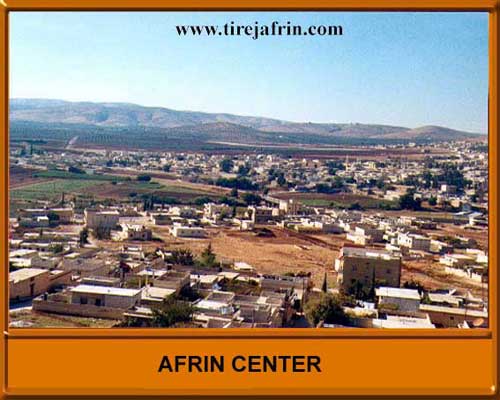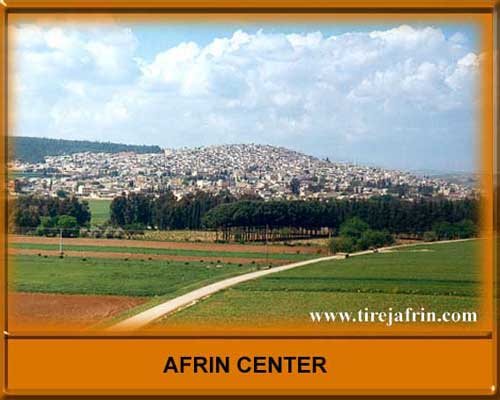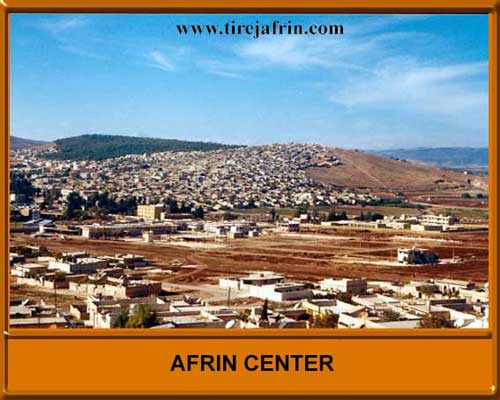Afrin City ( The province of the centre ) The sources refer to the fact that in the Roman era , there was a Roman Route passing across the present city of Afrin and the diggings on the souther side of Jindares Main Road showed many huge stones which perhaps were the bases of ancient buildings or they were the stone bases of that Roman Road . History books mention that in the Middle Ages -in the 14th century- there was a bridge named " Kibar" in the city site . In the end of the Ottoman Era , there was an inn for caravans and travelers beside the bridge in the place of the present Hall Town . The first people who inhabited in this city were the Armenians who resorted to the French forces running away from the Turks , so the Armenians started to build their houses there and after them some Aghas of the area started to build their houses such as Ale-Sido Mimi, Ale-Ghobari , Derwish Agha shemmo and then Ahmed Khalil Agha from Maamal Oshaghi and others . Afrin remained a small town with houses made of clay and stones and with wooden ceilings till the end of the 60s of the 20s century . At that time , the town started to have a wide architectural movement because of the local emigration to Afrin and as a result many new avenues were formed in Afrin and they were : Al-Mahmoudiyya Avenue in the western north , Al-Zideyya Avenue in the north and it was the ancient village , Al-Ashrafiyya Avenue in the east and Al-Qarage Avenue in the western south and these last There is also Al-Bobannians Avenue which is located along the western bank of Afrin River . Then , Afrin is a beautiful , quiet and ancient city which has got a geographical location , straight streets and a moderate climate . The Geographical Syrian Dictionary says : "It is the most beautiful small city in Syria" . Afrin is the main economic , social and administrative centre in the region . In the last period of the twentieth century , an important architectural movement started in the city and consequently the street of Rajo Road turned to a main commercial and architectural centre of the city , so many buildings with stories have been built on the two sides of the street as well as many good shops which have different goods . There is also a daily trade market in the city which displays the different agricultural and animal products in addition to the weekly market on Wednesday . There are also many factories in the city to produce soap and oil as well as small factories to building substances and nutritious substances . There is also a factory whose name is "Al-Batta" which was built in 1927 and produced alcohol . There are many industrial workshops such as carpentry , smithies and workshops to repair machineries and what makes Afrin different is everlasting movement of traveling from Afrin to Aleppo because many families settled in Aleppo and this makes the social relation ships and the economic and cultural relations between Afrin and Aleppo very strong . Afrin city now is the centre of an area has about (263) villages and (100) farms . In the end of 2001, it had a population of about (80,000) people according to the town Hall statistics and (43076) people according to the civil Register in 2001 and it is with an area of (76,377 square kilometers ) and it has got 41 villages and 15 farms . It is important to mention that the height of the city ranges 190 meters beside (near) the Bridge and 392 meters at the top of Al-Zedieyya height according to a cave situated on the northern front beside the cemetery of Al-Zedieyya .
|
|


